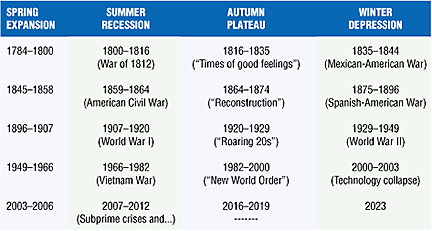My Kondratieff Wave
by Koos van der Merwe
Russian economist Nikolai Kondratieff believed that a collapse in the economy would be caused by companies that would not be able to repay their loans and would go bankrupt. Are we at that point?
Nikolai Kondratieff was a Russian economist (1892-1938) who observed that capitalist economies could be analyzed by wave theory. Kondratieff theorized that economic forces repeated themselves in a pattern of a 54- to 55-year boom-and-bust cycle. He described a boom's collapse as characterized by "renunciation of debt." He believed that the collapse would be caused by companies that would not be able to repay their loans and would go bankrupt. Whether it is company debt, mutual fund popularity, technology investment, or a mortgage subprime excess, Kondratieff would have described the bursting of the present stock market bubble as just another "loan renunciation," which today's subprime crisis basically boils down to.
For his effort, and his failure to proclaim the death of capitalism, he was arrested and eventually executed by the Stalinist regime.
THE KONDRATIEFF WAVE
Many writers have argued that the Kondratieff wave, or the K-wave as it is commonly known, is only a study of long cycles of debt buildup and repudiation; that it is not exclusively a cycle about price inflation and deflation periods. Yet deflation is effectively caused by the collapse of debt. We could then argue that if this were the case, any long-term correction in the stock market up or down would effectively be the K-wave. Kondratieff further theorized the following:
- Years in which panics have occurred and will occur again can be measured by a regular cycle of 16, 18, and 20 years.
- Years of good times and high prices, times to sell values of all kinds can be measured by a regular cycle of eight, nine, and 10 years.
- Years of hard times and low prices, offering a good opportunity to buy stocks and goods and to hold until the years of good times and only then unload, can be measured in a regular cycle of nine, seven, and 11 years.

Kondratieff is therefore saying that the basic economic cycle is 54 years (16 + 18 + 20 years), which can be broken into subcycles of 27 years, as suggested in points 2 and 3.
Figure 1 summarizes the generally accepted economic phases since 1784 in the United States. Many financiers, especially nonbelievers, have argued as to the validity of the K-wave, especially in the post-World War II economy, given the fiscal and monetary tools of a modern economy.
...Continued in the November issue of Technical Analysis of STOCKS
& COMMODITIES
Excerpted from an article originally published in the November 2008 issue of Technical Analysis of STOCKS & COMMODITIES magazine. All rights reserved. © Copyright 2008, Technical Analysis, Inc.
Return to November 2008 Contents